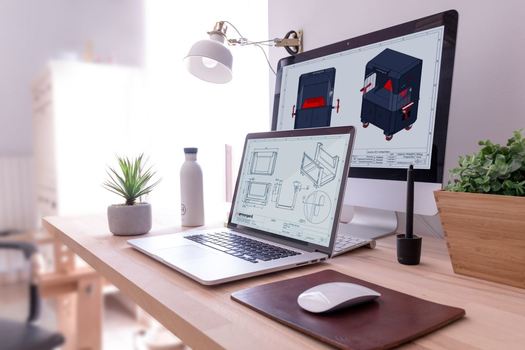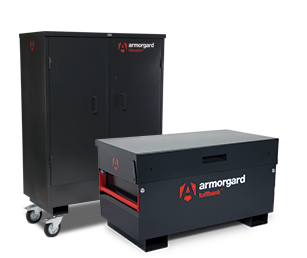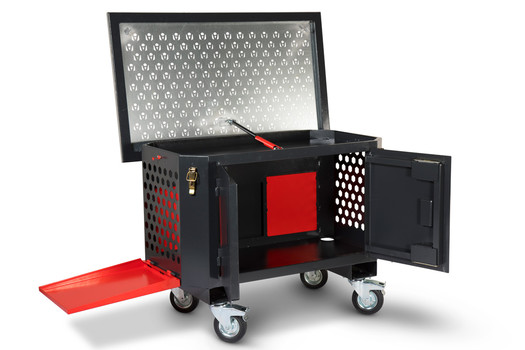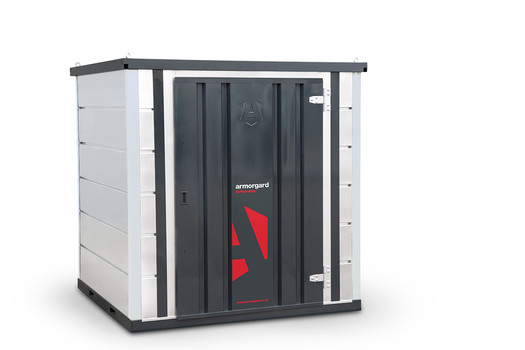The secret of great product design

This month we launch another new product XtractaBench, the latest bright idea from the R&D team at Armorgard. The 32nd new product design since our first new product design over a decade ago, which is some going when you consider our mission - designing outcomes.
You see, we want to make a difference in the world we design for, which means design that matters. And making things that matter involves many facets of design, not the least of which is usability.
Designing for usability considers as many plausible scenarios where a user might have difficulty interacting with the product. As product creators, designers, and developers we have a responsibility to make what we create as easy to use as possible for everyone, ultimately making life easier for our customers.
Sounds like a cliché? Maybe. But the truth is, there are no dumb users, only dumb products.
Our customer's customers, the end users, are also design thinkers, because they find new ways of tackling problems. Sometimes that can mean improvisation i.e. making the best choice out of available alternatives, which is true in any industry, and encourages us to take a divergent approach, to explore new alternatives, new solutions, new ideas that have not existed before.
So, we design for outcomes. We don't necessarily want to make beautiful stuff, although some of our products are aesthetically pleasing, instead we focus on making our customers world - construction sites - a better place, which means healthier, safer and more productive.
During the R&D process, we always pay a lot of attention to the people who are going to use the product. We ask them "Well, what do you want? What's a problem you want to solve?" And for every complex problem there is an answer that is clear, simple, and sometimes wrong.
Wrong because of habituation i.e. workplace routines and repetition - "doing it the way we've always done it" - which is not good. The implications of habituation on safety and productivity in the workplace are profound. If it stops us from noticing the problems that are around us, well, that's bad. And if it stops us from noticing and fixing those problems, that is even worse.
As designers, innovators and product engineers, it's our job to not just notice those things, but to go one step further and try to fix them.
Take XtractaBench, for example, a very straightforward, some would say simple, solution to a widespread industry challenge - cutting, drilling or grinding construction materials without risking health and safety.
As product designers, we try to see the world the way it is, not the way we think it is. Why? Because it's easy to solve a problem that almost everyone sees. But it's hard to solve a problem that almost no one sees.
People have been cutting, drilling or grinding construction materials, on site, for years. And they did it successfully, if not healthily. It was not an obvious problem. But regularly breathing in dust, caused by cutting, drilling or grinding construction materials, particularly in confined spaces, can cause life-changing lung diseases, which can lead to death.
So, when we considered what contractors wanted from a potential product solution to this problem, we had to think long and hard about usability, in terms of how to draw dust and fumes directly away from the working area and how to catch heavier particles, while at the same time allowing the user to do their job - cut, drill and grind stuff.
After several prototypes, consultation with dust experts, and hand tool experts, we came up with the simple, but highly effective, design of a perforated downdraft work surface, a built-in collection hopper and a fold-down external shelf to mount M or H class vacuums for on-tool extraction, which provided a solution to a less critical but equally frustrating problem of how to clean tools when back from hire – a feature that we believe will appeal to our initial customer, hire shops, in terms of cost efficiency and resourcing i.e. design that matters.
We see our products through the eyes of the customer, but when you're tackling a problem, sometimes, there are a lot of steps that lead up to that problem. Is that the way we've always done it? Maybe there's a way to do it better. XtractaBench, for all intents and purposes, is design that is human-centred.
It may integrate engineering technology, but it starts with what humans need, or might need. What makes life easier, less stressful? What makes a product useful and usable? But that is more than simply good ergonomics. It's often about understanding culture and context before we even know where to start to have ideas.
Another good example of designing outcomes, is the story of the R&D process involved in the design of a new tool storage solution - Forma-Stor - to the growing problem of theft of supplies, materials and plant from building and construction sites.
We wanted to understand what the aspirations and motivations were of construction professionals to understand how they might consider using such a product. Was there a trade-off between peace of mind and unwanted extra work? If the product could not be easily transported, assembled and deconstructed, would we be wasting our time, and their time?
So, thanks to an ingenious lightweight modular design, Forma-Stor comes flat packed, has only a few components and can be assembled on site by two people in less than 10 mins.
Focusing on the needs of humans and by using prototypes to move ideas along quickly, by getting the process out of the hands of designers, and by getting the active participation of end users makes a crucial difference to the design outcome.
We like to believe that design thinking can make a difference, that it can help create new ideas and innovation.



